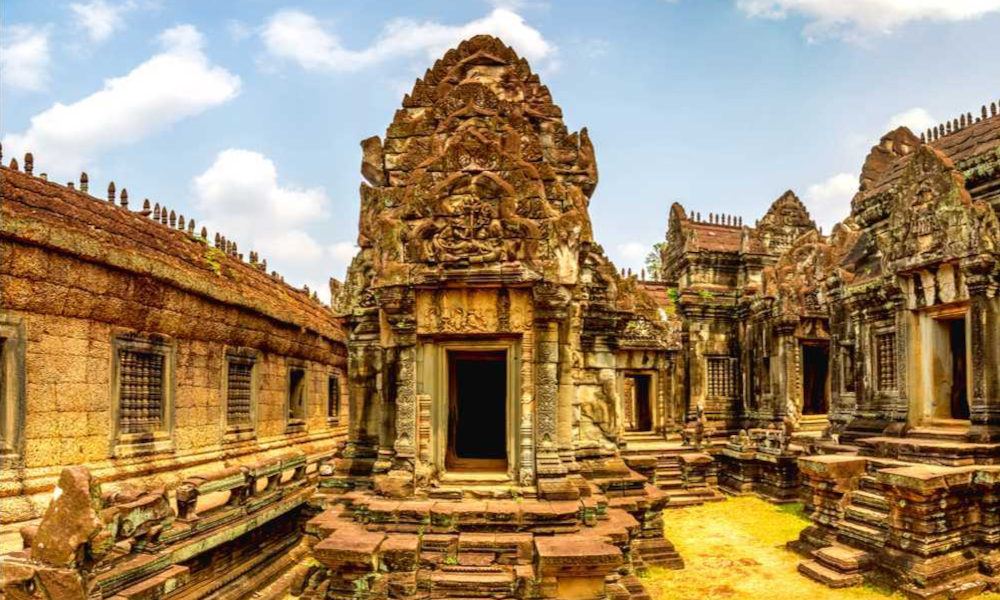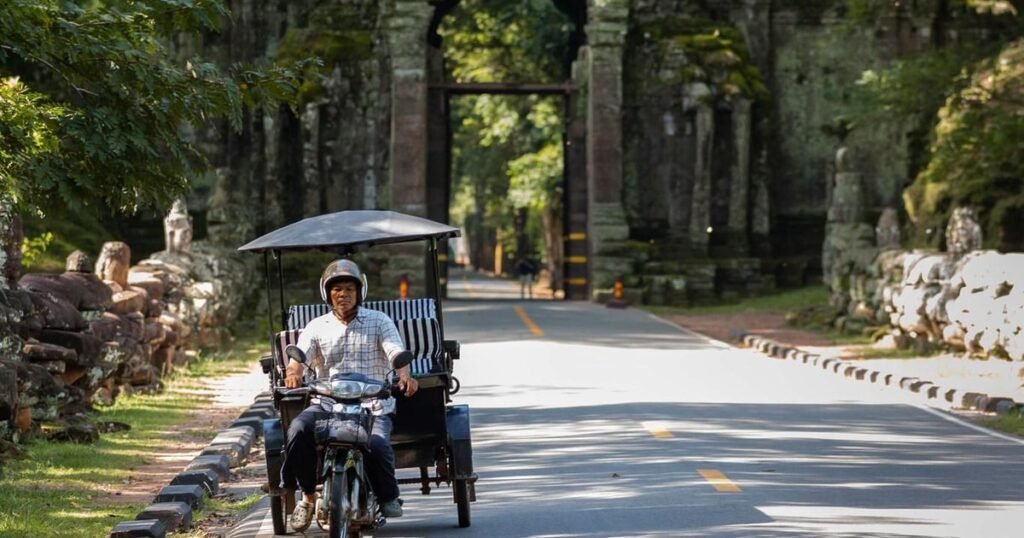Banteay Samre Temples

Banteay Samre, also known as Banteay Samrae, stands out as one of the most exquisite smaller ancient temple complexes, nearly rivaling the renowned Banteay Srei. Constructed in the early 11th century as a Hindu temple during the reign of King Suryavarman II (reigned 1113 – circa 1150 AD), it was subsequently completed by King Yasovarman II (reigned 1160 – 1166 AD) in the early 12th century. This temple is situated approximately 10 kilometers northeast of Angkor Wat, adjacent to the eastern perimeter of the ancient East Baray.
Experience a private Tuktuk tour of Angkor Wat and its neighboring temples. Discover the grandeur of Angkor Thom, Ta Keo, Banteay Kdei, and additional locations...
Visiting Banteay Samre
This site, situated outside the primary temple circuits, is unfortunately frequently overlooked, despite being one of the more aesthetically pleasing locations. It boasts remarkable lintels and retains many of the intricate decorative elements that embellish the vestibules and shrines. It stands out as a unique destination within Angkor, inviting repeated visits to appreciate the reliefs on the frontons, where one can continually discover new artistic details concealed among the pilasters and base moldings.
The eastern causeway and entrance are particularly striking, while the western side offers a 500-meter walk along a dirt path, revealing remnants of a stone causeway that once extended to the now-dry East Baray. The site features numerous highlights, including well-preserved bas-reliefs on the frontons, tympanum/pediments, and lintels, as well as the remains of an ancient sarcophagus. If time allows or if multiple visits are feasible, one should examine the pilasters and base moldings for hidden figures from the Hindu pantheon.
The site operates from 7:30 AM to 5:30 PM, and an Angkor Pass is necessary for entry. Visitors can expect to spend at least an hour here, with additional time recommended for exploring the two causeways. Parking is available at the eastern entrance, along with restroom facilities and refreshment stalls.
Accessing the site is straightforward, with well-paved roads leading directly there. Transportation options include a car, tuk-tuk, motorcycle, or bicycle, with an approximate travel time of 30 minutes one way from the center of Siem Reap. To the north, one can find Krol Romeas and Prasat To.
History and Restoration Works
The site was established in the mid-12th century under the reign of King Suryavarman II (1113-1150) and was dedicated to Vishnu, constructed in the architectural style of Angkor Wat. Scholars have observed variations in artistic styles throughout the site, supporting the theory that it was subsequently completed by King Yasovaraman II (1150-1160). However, no inscribed consecration stele or inscriptions have been discovered to provide precise dates or the original name of the site.
There is much speculation regarding the identity of the sarcophagus located in the hall of the central shrine, as the name of the site was assigned by the French. Additionally, local legends tell of a villager who accidentally killed the king and, after being chosen by a sacred white elephant, ascended to the throne himself, a narrative that resonates with similar stories found in other regions of Southeast Asia.
The earliest succinct report on the site was made by Lunet de La Jonquière in the early 1900s, who described it as “Banteay Samre – the citadel of the Samre, an indigenous tribe residing in Kulen approximately 20 km to the east,” while also documenting the layout, condition, and reliefs of the site.
In 1936, the French initiated clearance and restoration efforts, beginning with the eastern terrace. By 1938, they had reconstructed the southern library, and in 1939, they completed the restoration of the central shrine and its entrance hall by 1940. Subsequently, work commenced on the western gopura and the first enclosure wall, during which a jewelry mold and a decorated bowl were unearthed. In 1942, restoration efforts shifted to the western gopura of the second enclosure.
From 2015 to 2021, APSARA undertook restoration of the Naga balustrade within the inner enclosure. In 2019, they commenced restoration of the sarcophagus, which has since been finalized. Ongoing restoration efforts utilizing new techniques for the balustrade are currently in progress as of May 2022.

